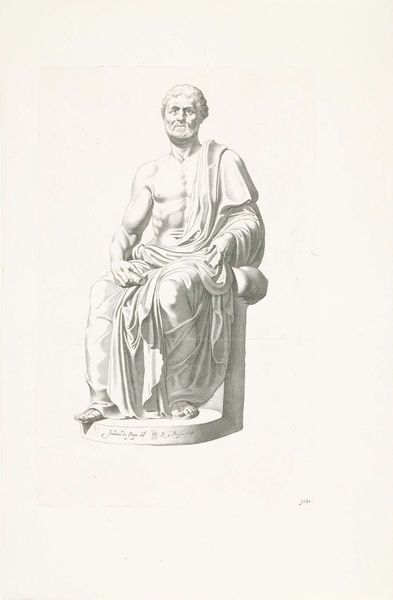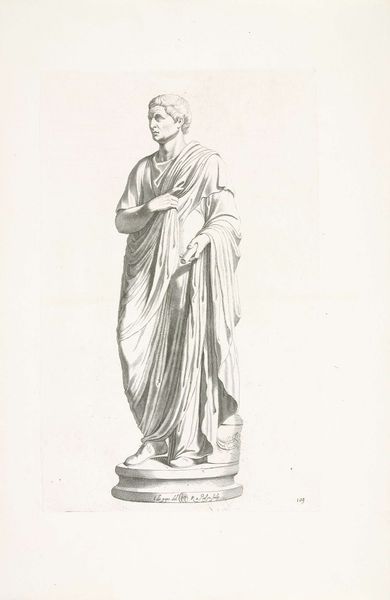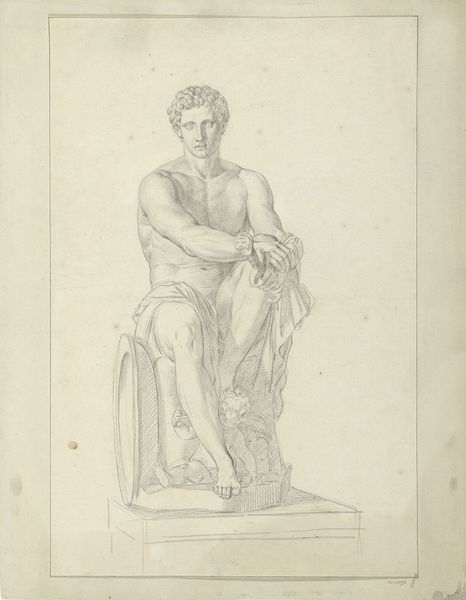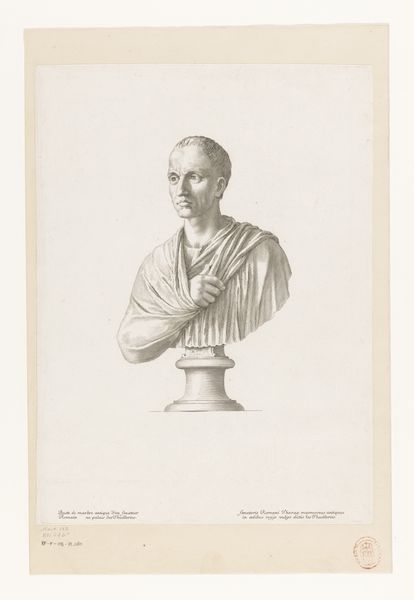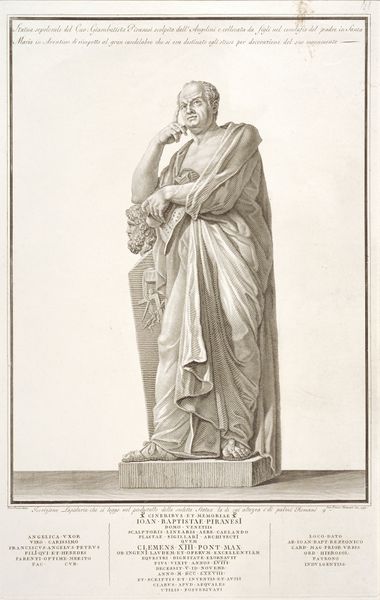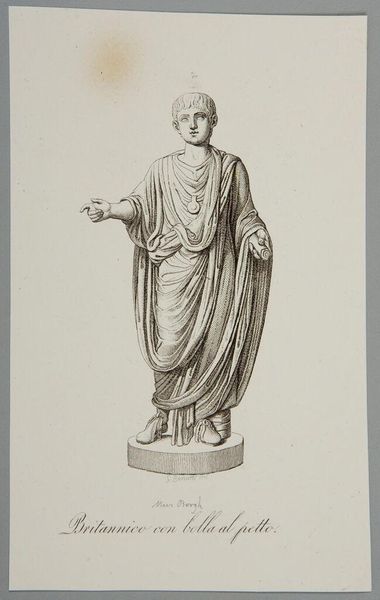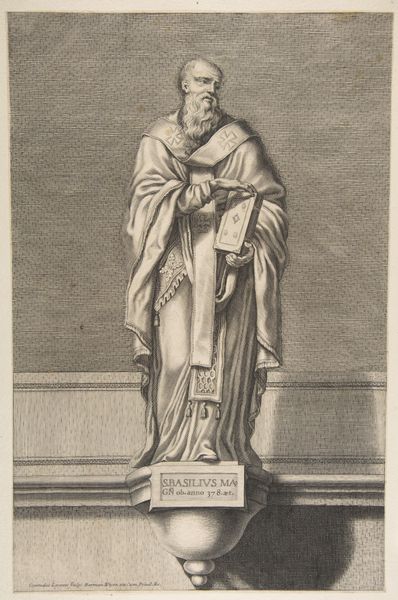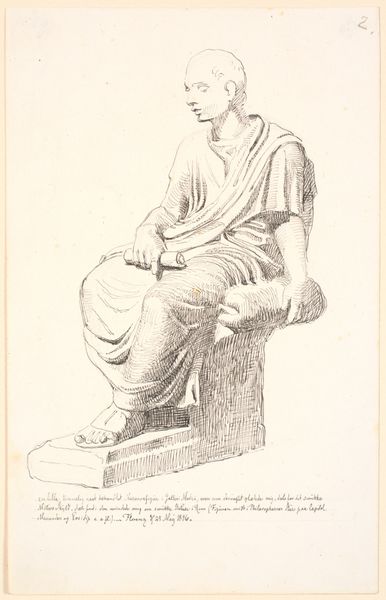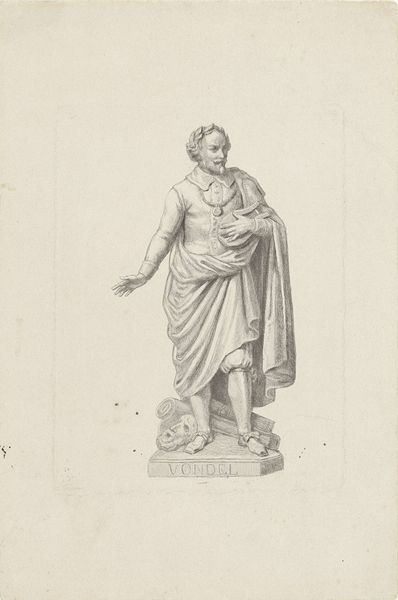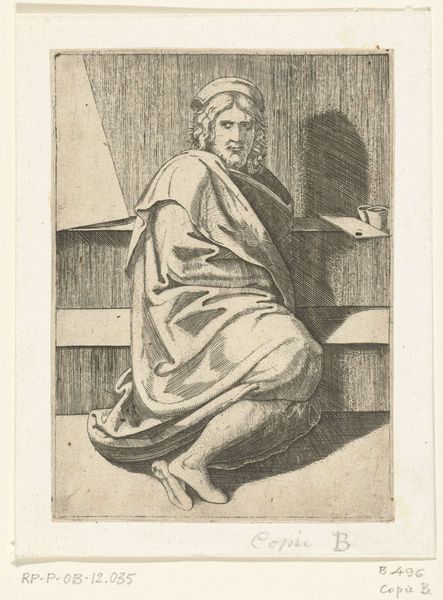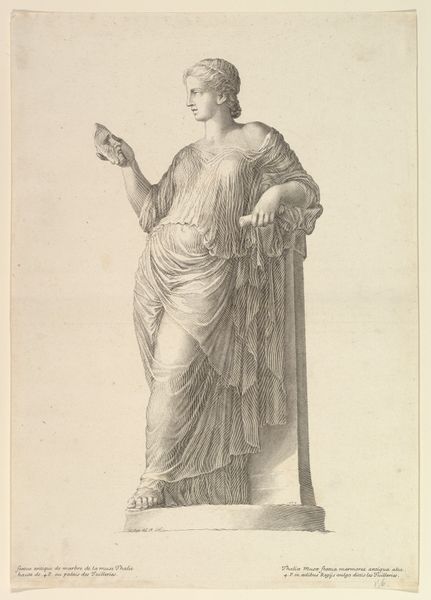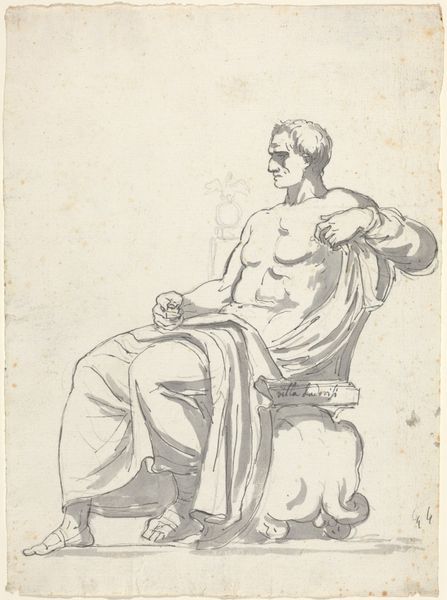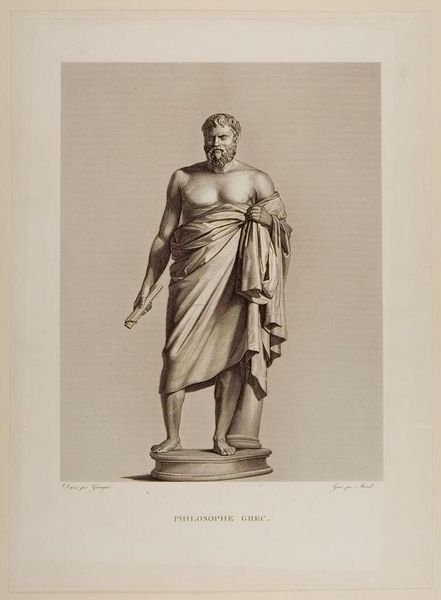
drawing, print, etching
#
portrait
#
drawing
#
neoclacissism
# print
#
etching
#
greek-and-roman-art
#
portrait drawing
#
history-painting
Dimensions: 224 mm (height) x 160 mm (width) (bladmaal)
Curator: Here we have Erling Eckersberg’s 1842 etching of Anders Sandøe Ørsted, currently held at the SMK, Statens Museum for Kunst. What's your immediate response to this print, Editor? Editor: There’s such a contemplative mood to it. He seems utterly lost in thought, his head resting heavily on his hand. It reminds me of a weary philosopher. Or maybe just someone with a really bad headache. Curator: The neoclassical style lends itself well to portraiture. Consider the materials, though; the delicate lines of the etching on paper are crucial. It creates an intimacy that a grand oil painting wouldn't. How do you think the process of etching informs our understanding of Ørsted? Editor: Interesting point! It makes him approachable, less like a distant historical figure and more… human. The softness of the lines, the almost faded quality, makes it feel like a memory, a fleeting impression. Plus, you know, anyone who's ever sat for a portrait probably has that pose—like just please be done with this! Curator: Indeed, his role as a politician and jurist are highlighted through his placement upon a neoclassical throne as if on a literal pedestal, scroll in hand, perhaps suggesting he carries some historic legal burden. And the production of prints means it would have been circulated widely; influencing public perceptions through accessible artwork, that blends craft with "high" art. Editor: But, his toga-esque draping makes him also feel timeless. Eckersberg is sort of inviting us to ponder how intellectualism stands against passing time. The soft rendering style lends him, rather than stark statuary that's like "remember me," to seem pensive but alive. Almost breathing, really. Curator: Well, this exercise shows us how process shapes reception. That something about etching and the context of Neoclassicism can have diverging influences of his perceived status in Danish society. Editor: True! From a materialist reading, and something emotional, and almost dreamlike… a reminder that seeing, is rarely just believing. Curator: Precisely! And now, let's move on to the next piece.
Comments
No comments
Be the first to comment and join the conversation on the ultimate creative platform.

